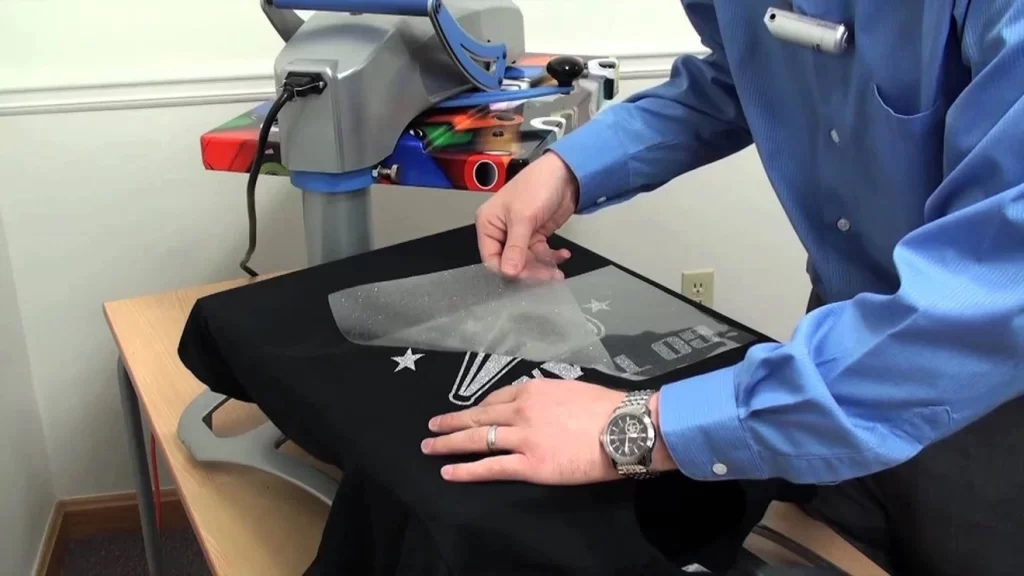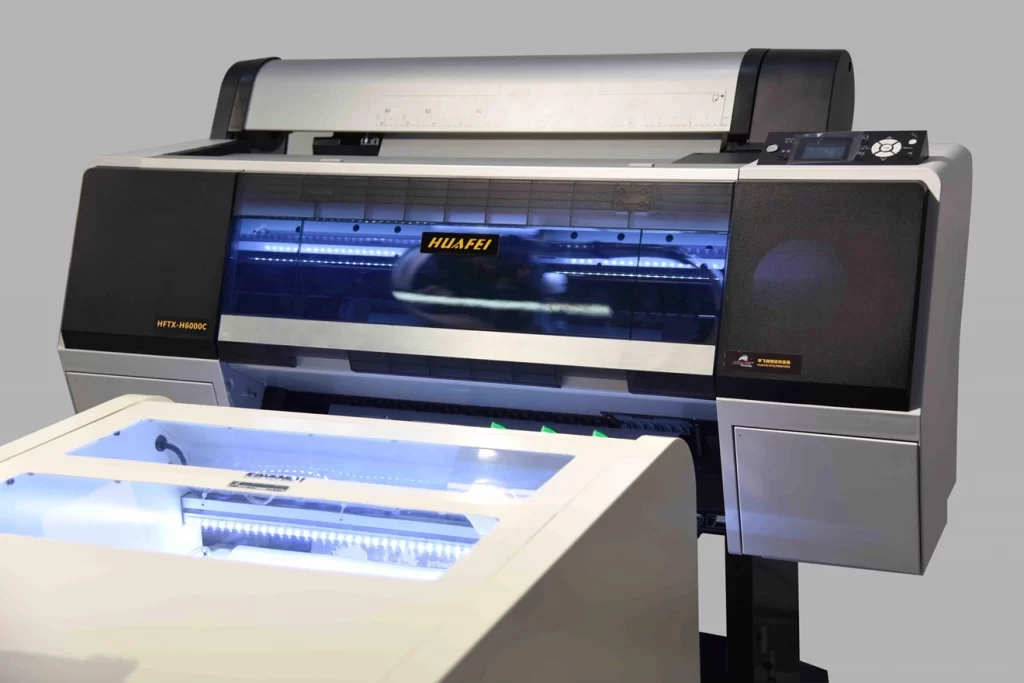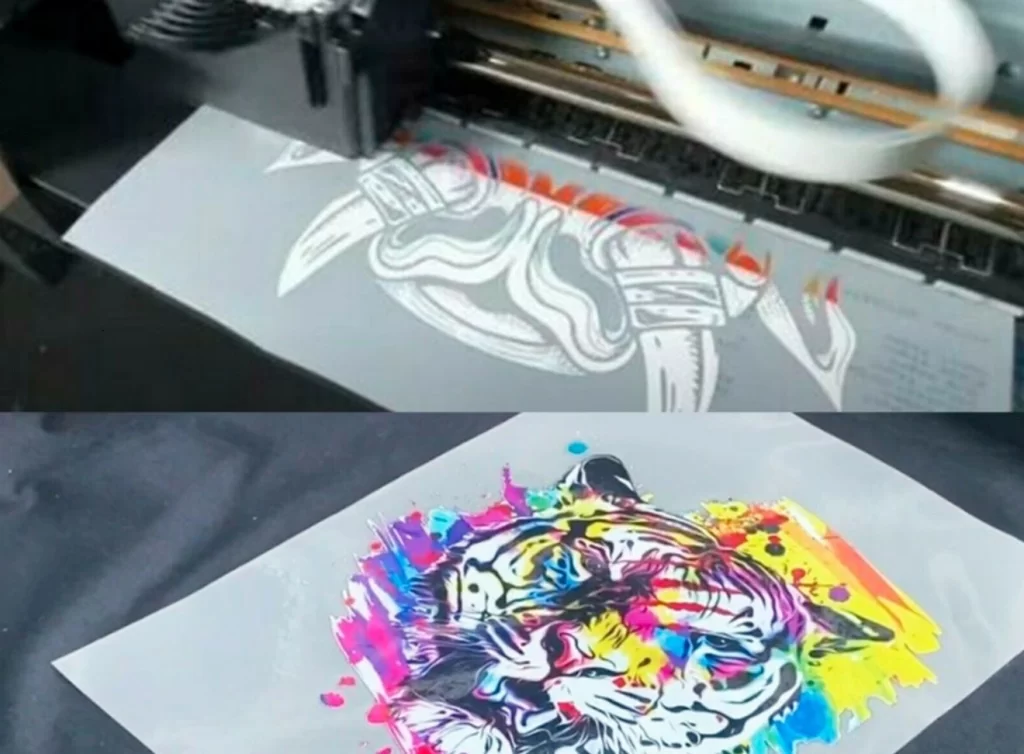What are DTF Transfers [Comprehensive Explained 2025]
Direct-to-film (DTF) printing has been a game-changing technique for garment decoration and clothing customization. It’s a versatile and cost-effective method to produce lively and detailed designs on various fabrics.
Among the key techniques employed in DTF printing, DTF transfer plays a key role. In this guide, you’ll learn about what are DTF transfers, their process, benefits, and applications.
Table of Contents
What are DTF Transfers?
DTF transfers are used to transfer intricate designs from a printed film onto the fabric surface. You can use them on different fabrics, including cotton, silk, rayon, polyester, and blends. The quality of prints by these transfers is effective for both light and dark-colored fabrics.
It involves a precise and controlled process to ensure the design adheres perfectly to the textile, resulting in a high-quality and durable print.
You may often think; what are UV DTF transfers? It involves printing designs onto a special film using UV inks and is cured instantly with ultraviolet light. The printed film is then transferred onto various substrates, including textiles, ceramics, glass, and metal, using a heat press.
Components of DTF Transfers
The components of DTF transfer typically include:
DTF Film or Transfer Sheet
This is the substrate on which the design is initially printed. DTF films or transfer sheets are specifically designed to accept DTF inks.
It has an adhesive layer that activates when subjected to heat and pressure during the transfer process. They come in various sizes and can be coated with a white base layer for printing on dark fabrics.
DTF Inks
DTF inks are formulated to stick effectively to the DTF film or transfer sheet to give out vibrant, durable, and wash-resistant prints. They come in different colors, including CMYK (Cyan, Magenta, Yellow, and Black) and white for full-color designs to print on dark fabrics. The texture of these inks is elastic to prevent prints from cracking when the fabric is stretched.

DTF Printer
A DTF printer is a specialized digital printer designed for DTF printing. It is equipped with printheads capable of jetting DTF ink onto the DTF film with precision. It’s essential for producing high-quality prints with fine details.
Heat Press Machine
The heat press machine is used to apply heat and pressure to the DTF film or PET film to transfer the printed design onto the fabric. The temperature and pressure settings on the heat press machine are important to ensure a successful transfer.
DTF Powder
A hot melted DTF powder in the form of glue is usually applied to the PET film. It acts as an adhesive between ink and cotton fabric to confirm the printed image is finely stick during heat press. If you’re new to DTF transfers, start with how to use the DTF powder.
Fabric
The fabric onto which the design is transferred is the main component. DTF transfer can be used on various fabric types, including cotton, polyester, blends, and more. The choice of fabric may affect the quality and durability of the final print.
Squeegee or Roller
A squeegee or roller is used to make a proper adhesion between the DTF film and the fabric. It is especially used when dealing with textured or uneven surfaces.
Cutting Tools
Depending on the design and the desired outcome, cutting tools such as scissors or a cutting plotter trim excess DTF film after transfer.
How do DTF Transfers Work?
If you’re one of those who want to know what DTF transfers are and how DTF printing works. It simply involves the following steps:
Step 1: Design Formation- The process begins with the formation of the desired design using the graphic design software RIP (Raster Image Processor). This digital design serves as the template for the final print.
Step 2: Printing on DTF Film- The DTF printer uses special DTF ink to print the design onto the film. These inks are formulated to adhere well to the film and provide vibrant and durable colors.
Step 3: Heat Press- After the design is printed onto the DTF film, it is carefully placed on the fabric. The fabric and film are then subjected to heat and pressure using a heat press machine. The heat activates the adhesive layer on the DTF film to make it fully bonded with the fabric fibers. Instead of a heat press machine, you can also use Cricut EasyPress or home iron.
Step 4: Peeling- Once the transfer process, cooling, and pressing are complete, the DTF film is carefully peeled off. A fast air breeze will leave the printed design on the fabric. The result is a vibrant, detailed, and durable print that can withstand washing and wear.
Benefits of DTF Transfers
DTF transfers offer many benefits over DTG and heat transfer printing methods, such as:
- They produce vivid, intricate, and high-quality prints with a soft hand feel.
- They can be used on different types of fabrics, including cotton, polyester, blends, and more, making them suitable for various textile applications.
- The resulting prints are highly resistant to fading, cracking, and peeling, ensuring longevity even after multiple washes.
- They are relatively affordable, especially when compared to other heat transfer printing methods such as direct-to-garment (DTG) printing.
- DTF transfers comparatively consume less time. Pressing a DTF transfer only takes a few seconds, proving to be highly convenient.
- The transfers are highly flexible and are resistant to typical wear and tear. Even if a fabric is tightly stretched, it can easily withstand it.
- By cutting down the labor costs, it presents a budget-friendly solution. You can produce high volumes of prints keeping printing costs low.
Cons of DTF Transfers
- DTF printers are hard to maintain and set up, and the printing technique is complex to carry out
- These transfers are not very eco-friendly.
- High humidity and temperature can cause the prints to fade.
- It tends to make the fabric less comfortable and breathable.

Comparison to Other Types of Transfers
DTF transfer printing stands out as a versatile and efficient method when compared to digital printing techniques. One significant advantage of DTF transfer is its ability to reproduce colorful designs with exceptional clarity and detail.
Unlike screen printing, which may require multiple screens for each color and is limited in detail, DTF printing has a full-color spectrum and finer design resolution.
Heat transfer vinyl (HTV) is limited by the type of material it can adhere but DTF has no limitation on fabric. With HTV printing, you have color limitations due to limited HTV designs. The resulting prints would be unique and beyond limitation in DTF transfer.
Furthermore, DTF transfer presents an edge over traditional methods like embroidery, which is time-consuming and costly for complex designs. These prints are not only vivid but also highly durable. If you know how to store the DTF transfers properly, you can keep them for a long time.
While screen printing and embroidery may have their merits in certain contexts, DTF transfer’s adaptability, efficiency, and detailed output make it a valuable addition to textile printing businesses.
Application of DTF Transfers
DTF transfer is a versatile printing method with applications in various industries, including
- Apparel Decoration: DTF transfer is widely used for customizing clothing items such as T-shirts, hoodies, jackets, bags, caps, and more.
- Promotional Products: It’s used to create branded promotional products like tote bags, hats, and aprons.
- Team and Sports Uniforms: DTF printing is suitable for creating customized sports jerseys and team uniforms.
- Home Textiles: It can be applied to home textiles like pillowcases, curtains, and blankets for personalized home decor.

Application Instructions for DTF Transfer
- Set temperature and pressure per manufacturer’s recommendations.
- Ensure that the fabric is clean and free of any wrinkles or debris.
- Preheat the fabric to remove excess moisture before adding the transfer.
- Carefully place the transfer on the fabric by applying 300°F temperature for 15 seconds.
- Allow the fabric and DTF film to cool for a short duration. Cooling helps set the ink and adhesive.
- Start from one corner and peel off the DTF film or transfer the sheet away from the fabric.
- Cover the print with parchment for 5 seconds or more. You can also use butcher paper, Teflon sheet, or tissue paper.
Tips for a Successful DTF Printing
Apart from knowledge of the DTF process and the equipment needed, you must follow the best practices outlined above for successful DTF prints.
Some of the key areas that should be actively managed to avoid poor DTF printer performance include equipment maintenance, proper selection of quality ink, ink storage, and covering of the printer from dust and other debris.
To these, the proper DTF printing temperature and time settings are important determinants of print quality. Still, by doing all these consistently, you will be able to achieve the best outcomes for your DTF prints at all times.
Conclusion
I hope now you have cleared your mind about what are DTF transfers! As they are versatile and emerging heat transfer printing solutions for customizing high-quality DTF prints on garments.
It has no color limitation and reduces production cost and time. If you are looking for a way to add your personal touch to your clothing, or want to start a custom garment business, DTF transfers are a great option to consider.
